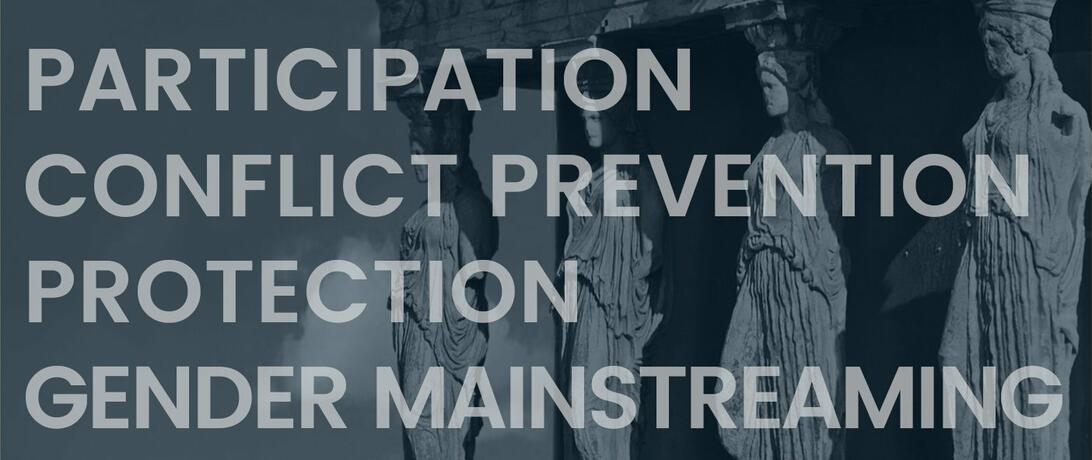
Continuing our series, Our Secure Future provides insight into implementing the four pillars of Women, Peace and Security.
It is a fundamental principle of the Women, Peace and Security agenda that human security and state security are intrinsically linked. That is, there cannot be human security without peaceful states, and there cannot be durable peace for states without the safety of their citizens. Last week, Our Secure Future discussed the four pillars of UN Security Council Resolution 1325: Participation, Prevention, Protection, and Gender Mainstreaming.
The four pillars are firmly grounded in the premise that women’s participation in high-level decision-making processes and their contributions to issues of security, economic recovery, governance, justice sector reform, and reconciliation will improve the chances of attaining a durable peace.
Instead of planning for large-scale cross-border aggression, the Women, Peace and Security agenda sets its strategic priorities by identifying significant threats to individual security as well as state security through the framework of these four pillars. For example, sexual and gender-based violence, which would fall under the Protection pillar, is a significant security threat to individuals, and it is a significant threat to a stable state because rape is used as a strategy in armed conflict to destabilize economies, claim territory, force migration, and break down the civilian population.
The four pillars help policy makers do at least three things more effectively:
- Involve women in different aspects of international peace and security decision-making. Through these four pillars, UNSCR 1325 highlights the importance of women’s inclusion as a matter of equity and effectiveness in any matter of peace and security. The resolution also builds on the commitments contained in The Beijing Platform for Action (1995) adopted at the UN’s Fourth World Conference on Women, which laid out a framework for achieving greater equality and opportunity for women based on the fulfillment of their rights.
- Provide a framework for the UN, regional organizations, governments, and civil society to take specific noncoercive actions on the peaceful measures outlined in Chapter VI of the UN Charter. The pillars define the responsibilities of the international community to reduce violence, increase protection, promote gender equality, and halt the perpetuation of gender inequality in accordance with the UN Charter to help maintain international peace and security.
- Provide policy makers and security actors with a new set of tools to plan for large-scale, coordinated collaboration of the international community to support the strategic priority of creating states that can serve and protect men, women, boys, and girls. It also provides concrete action steps to help states evolve out of conflict peacefully, such as consulting with women, including women and women’s organizations in constitution drafting, and gender-equitable policies.
The wide range of options presented in the four pillars can help the Security Council and member states to more systematically and strategically implement the Women, Peace and Security agenda in the future.
If you love learning about UNSCR 1325, keep an eye out for our upcoming cheat sheet for how to use the four pillars and identify them in key Women, Peace and Security legislation! In the meantime, you can educate yourself further with the following activity:
Look at the Windhoek Declaration from the UNESCO seminar Promoting an Independent and Pluralistic African Press in Windhoek, Namibia and the Namibia Plan of Action on Mainstreaming a Gender Perspective in Multidimensional Peace Support Operations (S/2000/693). What pillars are identified and emphasized in these documents? Is it surprising to see Women, Peace and Security included in a document related to freedom of the press? Why or why not?
Article Details
Published
Topic
Program
Content Type
Opinion & Insights